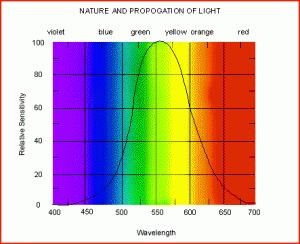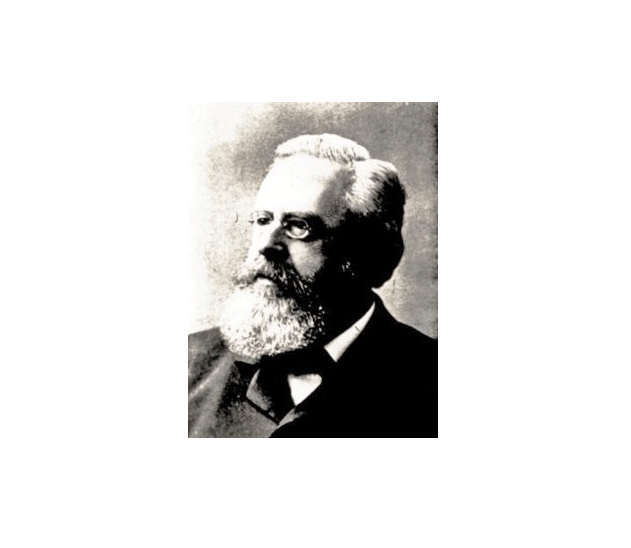Colour Science
Stephen Westland
Professor of Colour Science and Technology
University of Leeds
Stephen Westland
Professor of Colour Science and Technology
University of Leeds
Colour is ubiquitous in the world. Almost every living thing, natural object and manufactured product is coloured.
Colour enriches and enlivens our everyday experience. It also provides rich information about the environment in which we live. The source of colour is, of course, light. Without light there would be no colour. Light is part of what is known as the electromagnetic spectrum. This spectrum includes radio waves, radar, TV broadcast signals, infra-red, X-rays and many more. Electromagnetic radiation is a form of energy and the nature of the energy is characterized by its wavelength. Energy that travels with a very long wavelength includes infra-red, radio waves and microwaves; energy that travels with a very short wavelength includes X-rays, ultra-violet and gamma-rays. In between the short and long wavelengths is a very narrow region to which human eyes are sensitive; this is known as light. If we look at all the wavelengths to which we are sensitive – and this happens naturally when we look at a rainbow in the sky, for example – then we see a spread of colours from purplish blue at one end to red at the other end. We call this the visible spectrum.
When we look at a rainbow we see the different colours because small particle of water in the air effectively split light into its component wavelengths. However, the rainbow is one of the very few examples where we typically see wavelengths of light on their own. The light that comes from the sun, for example, consists of all the wavelengths in the visible spectrum (and many others besides). Other sources of light (such as a naked flame or a man-made fluorescent tube) also emit most of the wavelengths in the visible spectrum. When we look at objects in the world we see them because they are illuminated by light (from the sun or some other source). Some of the light is reflected by the objects and detected by our eyes. This is why it is reasonable to say that without light there would be no colour. Objects that reflect almost all wavelengths that they receive tend to appear as white or near-white. Objects that reflect almost none of the wavelengths that they receive tend to appear as black or very dark. The reason that objects reflect only some of the wavelengths is mainly because they absorb certain wavelengths. It is colorants – also known as dyes and pigments – that absorb the light. Most dyes and pigments absorb all visible wavelengths to some extent; however, if they absorb some wavelengths much more than others then they appear coloured. For example, a dye that absorbs the shorter wavelengths (that normally appear blue in the rainbow) of the visible spectrum will appear yellow.
Because most objects reflect all the wavelengths in the visible spectrum (albeit to a greater or lesser extent) the light they reflect and that is detected by our eyes is a mixture of wavelengths. This allows us to see colours that don’t exist in the rainbow (where wavelengths are seen in isolation). We see browns, oranges, creams, white, black, taupe and magnolia, to name but a few. It is often said that colour requires three components; light, an object to reflect the light, and an observer to detect the reflected light. This is generally true, though we can also see colour when we look at emitted light directly (such as the sun; though doing so is not advisable of course), we can also dream of colour and we can close our eyes and imagine colour. But what is the purpose of colour? Almost certainly we have developed colour vision so that we can know more about the environment in which we live. Because of colour we can detect when fruit is ripe, we can tell when our child is ill, we can tell when meat is cooked, and we can find objects quickly and efficiently even when seen against cluttered backgrounds.
Though historically the primary purpose of colour was surely to enable us to survive more easily in the world, today colour is used for a multitude of purposes. Colour is used to communicate, to advertise, to attract, to amuse, to frighten, to please, and to evoke. Colour now plays an immense role in our lives. It has been said, for example, that when shopping, on average people make a preliminary decision about a product in only 90 seconds and around 60-90 percent of their judgment is just based on colour. One of the reasons that colour can have such a prominent effect is because colour evokes within us emotions and conveys messages. The area of research that studies this is generally known as colour semiotics. The effect of colour on our mental state is complex and not always easy to predict. Certainly there is variation in the effect from person to person and there are undoubtedly differences in the effects as we move through times or if we compare one culture to another. One reason for this is that the reasons for the psychological effect of colour are varied. So, for example, it is likely that some effects of colour have been with us for hundreds of thousands of years. The colour red is associated with danger and the colour black is often associated with fear and evil. It’s possible that these colours trigger deep-seated emotional responses to the colour of blood and to the darkness of the unknown night, for example. However, interacting with these primordial colour associations is the effect of culture and society. For example, in many societies we associate blue with boys and pink with girls. This would seem be a product of our culture and something that is not fixed in stone but which could be changed in the future with changing trends and fashions. A further example would be the association of purple, particularly in western civilizations, with royalty and richness. In the 4th Century BC the purple dyestuff known as Tyrian Purple (or royal purple) was as expensive as silver. It is not surprising that the Christian church, keen to demonstrate its wealth and power, would choose to incorporate purple into its robes and other paraphernalia. It is therefore easy to see that the meanings and associations we have for colour are not wholly consistent across the globe. The semiotic content of colour coupled with its emotional impact makes colour an extremely powerful tool for advertisers and an important factor for the consideration of design.
It is also interesting to consider the effect of colour on our well-being and health. This is an area that is need of more detailed research and validation. However, there is evidence that the appropriate use of colour in architecture, urban planning and interior design can have a profound effect on our emotional well-being. The close relationship between our mental and physical states means that it is not surprising that some research has indicated that colour can also affect our bodies, physiologically. Light has been used to treat skin conditions such as psoriasis and acne, to aid with wound healing, to reduce the effects of Parkinson’s disease and to address certain aspects of depression. Perhaps the most dramatic example of this latter use is the application of light therapy to treat seasonal-affective disorder where light boxes or exposure to direct sunlight are thought to be effective.
Stephen Westland
Professor of Colour Science and Technology
University of Leeds
Stephen Westland, Huw Owens and Helen Disley discuss the science, art and philosophy of colour. Does colour exist? Is black a colour? How many colours are there? These questions … and many more.
Late-night discussion about the colour vision of dogs, shrimp, bees, cows, bulls and many more. Do dogs see in colour? Are bulls really enraged by the colour red? Does colour even exist?
January 12, 2021
When did humans first see colour? Do we all see colour in the same way? Does colour even exist in the physical world?
January 18, 2021
It it really true that red makes the heart beat faster? And what happens to you when you are placed in a pink room?
January 28, 2021
Steve, Huw and Helen discuss colour blindness.
February 12,2021
The pioneers of colour research are many including Edwin Babbitt 1828-1905, who devised a treatment using coloured bath water (solarised water) which took on the energies of a specific Colour to treat a patient’s condition. The classic work "The Principles of Light and Colour" written by Dr. Edwin D. Babbitt, published in 1879, is one of the masterpieces on Colour therapy.
In 1665 at Cambridge University Isaac Newton concluded that white light is a mixture of many colours. His glass prism refracted or bent the Colours making them “disperse” so they could be seen.
Rudolph Steiner 1861-1925 philosopher, scientist, and educator created the Waldorf teaching method using specific colours in his classrooms to stimulate the required energy needed to study a particular subject.
The late Theophilus Gimbel, Colour Practitioner BRCP., H. Dipl. C. Th.
The foremost expert on colour in Europe, pioneered the use of colour in home and hospitals and scientifically proved the effectiveness of colour. Alison was very fortunate to have experienced some private meetings with Theo about the Colour Breathing Disks and products.
This website is not intended to provide medical diagnosis, advice, treatment, or endorsement.
All rights reserved. CBRT Healthcare Innovation Systems Ltd 2025






